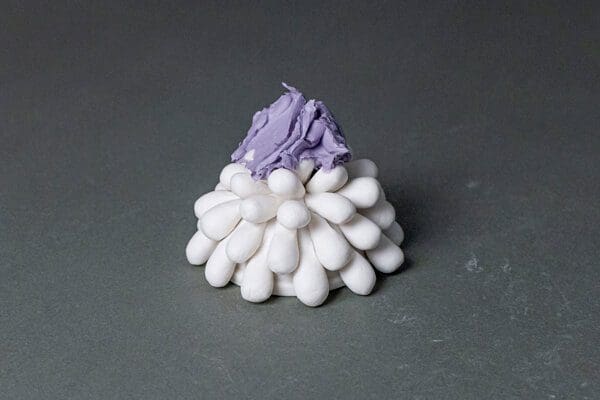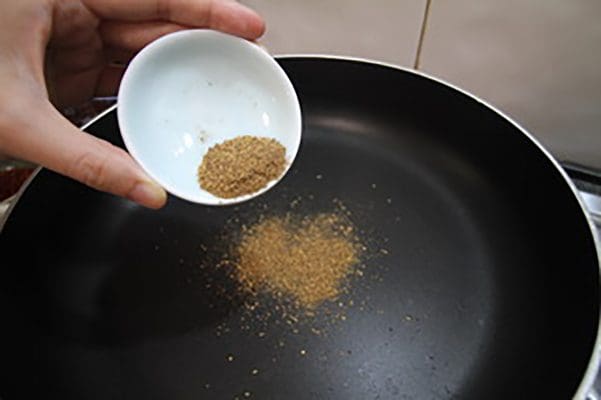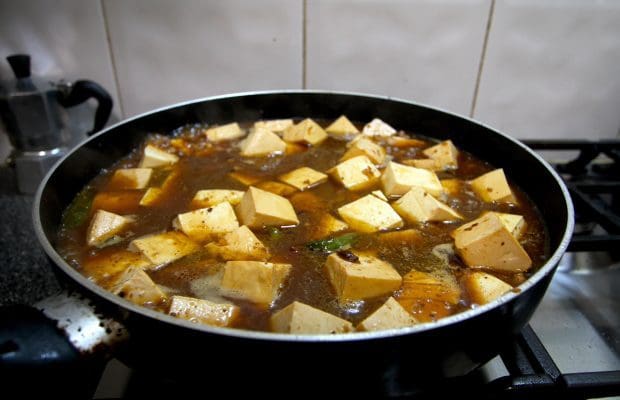
Place-driven Practice
Running for just two weeks across various locations in greater Walyalup, the Fremantle Biennale: Sanctuary, seeks to invite artists and audiences to engage with the built, natural and historic environment of the region.
Whether in the studio or the kitchen, Sydney-based ceramicist Ruth Ju-Shih Li orchestrates her materials much like a conductor might. She gathers what she needs around her, and then brings each component into play, layering and enriching, until whatever she is making, whether a porcelain sculpture or a chestnut dessert, emerges into a state of harmonious completeness.
In lockdown, three of Li’s projects are in exhibition limbo, suspended until state travel restrictions are lifted. The artist’s graceful, detailed sculptures are assembled from raw clay components and are highly breakable. Shipping is out of the question. Each sculpture must be constructed on-site and is deconstructed soon after exhibition. “Ephemerality is the soul of the work,” says Li.
Li’s distinctive sculptural style, reminiscent of botanical and biotic forms, first developed as a private, contemplative pursuit, parallel to her more functional ceramic practice. “The pieces are an autobiographical meditation on life, death and time,” she explains. “A couple of years ago, my partner passed away from leukaemia and then my father passed away from multiple myeloma. My brother is currently battling cancer as well. These changes prompted me to shift direction, to think and meditate.” The fleeting temporality of each sculpture—composed, shared, rescinded —is Li’s way of “embracing every stage of life, including change, decay, death and renewal.”
This makes Li’s work primarily experiential. Her gallery Mayspace has worked out a novel arrangement whereby would-be collectors can buy “the process, performance and time” of a new sculptural iteration. Afterwards, the artwork “ends” and the clay is recycled. When lockdown arrived, all in-person art experiences were stifled. “I have had to think seriously this year about how my work might be able to enter a collection,” says Li. “Australian institutions aren’t really set up to hold ephemeral work. There are some museums in Europe doing it, but it’s new and is something I’m still researching.”

Waiting at home, Li’s great love of food has amply filled the space left by clay. Li sees cooking as a practice continuous with generosity. “We always had a very open home,” she remembers. “It was natural to have five, ten, people, friends, all eating together. Food is my love language. It represents gathering, togetherness and acceptance.” Currently, Li’s table is shared by her mother, brother and his fiancé. A reduction to just four diners is no barrier to the zeal of a cook who can “get side-tracked” and materialise “two cheesecakes in a weekend”.
Family recipes filtered to Li from her father Steven Shou Po Li, who became a conduit between the artist and the food of her grandparents in Taiwan and her Chinese forebears. From Steven she inherited a respect for the rules but also a drive to tweak, invent and abandon measurement: “I cook the same way I work with clay. It’s instinctive. I almost never know what’s happening on the spot, that’s why I overprepare. I bring a lot of components to the table and I see where it takes me.”
Of utmost rank in Li’s larder is the chilli. “I have everything!” she enthuses. “Fresh chilies, dried flakes, dried chunks, chilli powder, chilli jam, chilli oil, marinated chilli. The upper half of my fridge is all chilli.” Li remembers the first time she ate truly hot chilli in China: “It was so spicy; I couldn’t eat anything! I remember asking for blanched vegetables and the waitress gave me the weirdest look. Over the years, I developed my tastebuds. Now I love chilli and the different flavours chilli provides.”

Li’s is not a pursuit of heat, but of character and intensity. “With Chinese cooking, we focus on flavour, colour, aroma and texture. For a dish to be considered balanced, you need the elements in harmony.” A perfect example Li’s symphonic Mapo Tofu, a recipe shared below for Art Guide readers. “There are different versions of Mapo across China and Taiwan. Every family has their own recipe. The name means ‘spicy and numb’. Szechuan pepper is central: that’s where the numbing sensation comes from.” Li has prepared Mapo over rice weekly for as long as she’s been cooking. Though hearty and comforting, the dish “uses all the different qualities of chilli at different stages, from roasting the dried chilli flakes, to fresh chilli, to cooking in chilli jam and chopping it up with chilli oil.”
As a wildly popular dish with innumerable local versions, Mapo resonates with Li’s complex sense of belonging as a “Chinese-Taiwanese-Australian. Identity is not a singular thing, but an acknowledgement of where you were, are and where you’ll go,” she says. “It’s a layering of narrative and identity that is enriching rather than divisive.”
In a forthcoming work for 4A Centre for Contemporary Asian Art, Li does just this. Topography of Memory is a ceramic project “celebrating locality, individual experience and the formation of nationhood.” Tendrils of clay cascade from the ceiling, made in collaboration with Indigenous artists in a skill-exchange workshop. The clay itself is enriched with “local ochre with permission from the local elder. The clay will be recycled, travel to a new site and be remade with added local clay. As the work travels, the work narratives will build,” says Li. “With Chinese cooking, everything is served in the centre of the table and everybody eats from the same dishes. That’s the kind of culture I want to translate into my work.”
Ingredients:

Spices:
Condiments:
Garnish: (not just for the visual but also for aromatic purposes!)
Directions:
Gently toast the spices on low heat in a pan. Once fragrant, turn up to high heat, drizzle in some cooking oil and quickly throw in the garlic, ginger, fresh chilli and the white section of scallion. Mix and sauté the aromatics until fragrant.

Make a well in the centre of the pan by pushing everything to the sides and gently sauté the fermented soybean paste—this enhances the flavour of the paste. Add in the pork mince and break up the clumps while mixing everything together. Once browned, gently add the cubes of tofu and soy sauce, folding instead of mixing to avoid breaking the delicate tofu.

Pour in enough water to cover the tofu, place lid on your pan and leave to simmer on low heat for 15-20 mins. The longer you simmer the more flavours the cubes of tofu will be able to absorb.

Uncover and let simmer a further 5-8 minutes to reduce the sauce. Do a quick taste test and adjust to taste; add more soy sauce or more water according to your preference. Once you are satisfied with the saltiness, make a slurry by adding a dash of water to the potato starch, mix well and drizzle all over your Mapo Tofu while gently mixing until the sauce has thickened.
Turn off the heat and drizzle chilli jam, chilli oil and Sichuan peppercorn oil on top. Letting the heat from the tofu gently warm up the oils to release their fragrance. Garnish with finely chopped green section of scallion and coriander. Serve hot over a bed of freshly steamed, fluffy rice.

Drawn by stones
4A Centre for Contemporary Asian Art
Forthcoming: Check gallery website for updates
www.4a.com.au
Dorveille
Vermilion Art
Forthcoming: Check gallery website for updates
www.vermilionart.com.au
Sydney Contemporary 2021
Mayspace Booth
November 2021: Check festival website for updates www.sydneycontemporary.com.au